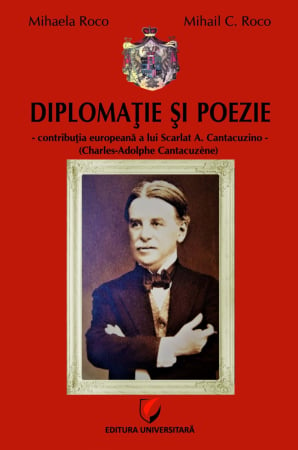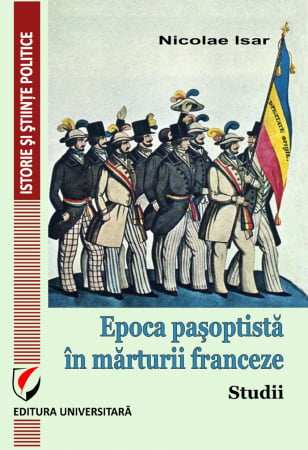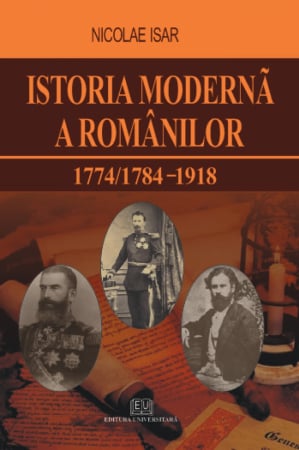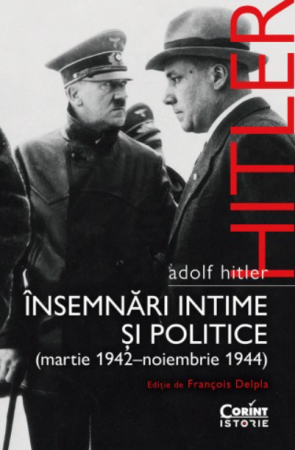Publisher: Editura Universitara
Author: Alina Diana Brumar
Edition: I
Pages: 196
Publisher year: 2022
ISBN: 978-606-28-1558-5
DOI: https://doi.org/10.5682/9786062815585
- Description
- Download (1)
- Authors
- Content
- More details
- Reviews (0)
We will see how the great powers closed their embassies and bet on the quick extinction of the conflict, but, unfortunately, the state of uncertainty was prolonged. The book also analyzes the possibility of a new "Cold War", the world dividing again into two: the states that denounced the Assad regime for the brutality with which it treated its own citizens and the friendly states, which supported the Damascus regime in the fight with the opposition.
-
From the Arab Spring to the civil war. The evolution of the conflict in Syria
Download
Chapter I. Brief history of Syria / 13
Chapter II. The context of the outbreak of the war / 23
2.1. The situation in the Middle East / 23
2.2. Arab Spring / 32
2.3. Religion and ethnic structure / 34
2.4. The socio-economic situation / 40
Chapter III. Period 2011-2013 and post-2013 / 44
Chapter IV. The year 2013 in the evolution of the conflict / 52
Chapter V. Actors involved / 61
5.1. Regional and extra-regional powers involved in the conflict / 62
5.1.1. United States of America / 62
5.1.2. United Kingdom of Great Britain and Northern Ireland / 64
5.1.3. French Republic / 66
5.1.4. Kingdom of Saudi Arabia / 68
5.1.5. Gulf States / 75
5.1.6. Republic of Turkey / 84
5.1.7. Russian Federation / 86
5.1.8. Islamic Republic of Iran / 95
5.1.9. Republic of Iraq / 97
5.1.10. Afghanistan / 99
5.2. Non-state actors / 99
5.2.1. Hezbollah / 99
5.2.2. The Islamic State of Iraq and Syria (ISIS) / 106
5.2.3. Al-Nusra Front / 111
Chapter VI. The road to peace / 114
6.1. The motivation of the parties when they choose the non-violent route and the alternatives of the forces involved / 114
6.2. Objectives, strategies and mediators / 120
6.3. Involvement of the UN Security Council / 144
6.4. The result of the peace process / 155
Conclusions /167
Bibliography / 175
In Syria, the underlying issues of the dispute cannot be ignored, nor can the multitude of actors who have been involved in the ten years of war and who fueled the conflict. The civil war in Syria can be viewed from several perspectives. For a large part of the international community, this conflict may seem purely political: citizens are fighting to win their freedom against an inherited and corrupt dictatorship. For the fundamentalists, it may seem like a religious war, the rebels being those who fight for Islam and in the name of Allah. For powerful states like Saudi Arabia or Iran, the war is purely strategic, they are thus trying to maintain and extend their dominance in the region.
Thus, the purpose of this paper is to analyze the civil war in Syria, using the actions of the main actors involved, but also the decisions of the international community. The objectives of the study are: understanding the recent history of Syria and the great changes that shaped the country; analysis of the situation in the Middle East before the outbreak of the Arab Spring; identifying the main elements that characterized the Syrian policy and that of the great powers before and after August 2013; analysis of the August 2013 chemical weapons attack and how it changed the course of the conflict; defining the policy of state and non-state actors involved in the conflict and their objectives; description of the two peace processes - the Geneva Process under the auspices of the UN and the Astana Process under the auspices of Russia, Turkey and Iran.
Throughout this work I managed to identify some moments that I could consider "key points" in my research. The work is based on the deductive research method because I first studied the regional situation, here being one of the key points without which the civil war could not be fully understood and the impact that the ethnic and religious structure of Syria had on the development the conflict. To these is added the socio-economic situation in the country starting with the year 2000, with the coming to power of Bashar al-Assad, the young man whom the people trusted to bring the much-desired reforms. The ethnic and the religious structure of Syria were represented graphically, each through a pie chart, made in Microsoft Excel. The data were taken from the IndexMundi website, but their veracity was also checked on the CIA Factbook. Also, another graph can be found in the last part of the work, representing the total number of refugees by country of asylum, also made in Microsoft Excel. For this graph, the data were taken from the UN High Commissioner for Refugees. To these is added a graphic representation with the location of the refugees, where I wanted to highlight the preferences of the refugees, very few of them choose to live in camps. Throughout the research, I also used the method of analyzing thematic maps, especially to understand the situation on the ground. Although the front lines have not changed for about a year, as the special envoy for Syria, Geir Pederson, claims, before this relative calm, in the 10 years of conflict, the regime's army lost territory both to the rebels and to against terrorist groups. Later, with external help, the regime managed to recover a large part of the territory. Thus, in order to understand the regional dynamics and the change in the balance of forces on the ground, it was necessary to analyze how the main actors involved moved on the ground, recovering and losing territory.
Another moment that I considered "key" for understanding and, above all, the evolution of the conflict is August 2013. I decided to dedicate a separate chapter to this moment because the chemical weapons directed against civilians in Syria represented a sensitive factor for the international community from 2013 onwards. Many regional and international actors were involved in Syria, which is precisely why many analysts believe that their non-involvement would have hastened the end of the war with the same or perhaps a different outcome. The major European powers allied with the Gulf states to support the opposition, while Russia and Iran showed unyielding support for the Assad regime. If we take into account China's position in the Security Council, as well as Xi Jinping's wishes for the re-election of Bashar al-Assad, Beijing could prove to be a reliable partner of Damascus. In order to analyze the actors' reactions at the beginning of the crisis and after a few years, we used the comparative method. Here I am referring in particular to those states whose policy has changed over time, either becoming more direct and aggressive, or toned down. Russia's direct involvement in 2015, but especially the position of the Gulf states: Saudi Arabia moderated its aggressiveness towards Damascus, and the United Arab Emirates and Bahrain resumed stable diplomatic relations with the regime they silently fought against.
The outcome of the peace process brings us to other key moments for understanding the course of the conflict and to be able to make some reflections for the future: Geir Pederson is optimistic, but he knows the region very well and knows that any straw fire could quickly turn into - a fire of great proportions. We also learn from here that the world is facing a great refugee crisis, but also the position of the Astana trio in 2021. To all this, add the presidential elections in Syria, which were not supervised by the UN and are implicitly not in agreement with resolution 2254 of the UNSC.
Customer Support Monday - Friday, between 8.00 - 16.00
0745 200 718 0745 200 357 comenzi@editurauniversitara.ro
6359.png)
![From the Arab Spring to the civil war. The evolution of the conflict in Syria - Alina Diana Brumar [1] From the Arab Spring to the civil war. The evolution of the conflict in Syria - Alina Diana Brumar [1]](https://gomagcdn.ro/domains/editurauniversitara.ro/files/product/large/de-la-primavara-araba-la-razboiul-civil-evolutia-conflictului-din-siria-917767.jpg)














